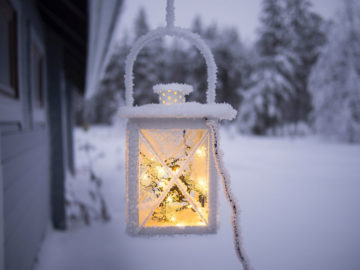12 Simple Home Repair Jobs to Lift You Out of Winter’s Funk
- December 26, 2017
- Murphy Team Voice
- Comments are off
Like that annoying squeaky floor board. Easy as tossing a ball to fix!
Accomplishments — even little ones — go a long way toward a sunny outlook. Fortunately, there are plenty of easy, quick home repair chores you can do when you’re mired in the thick of winter.
For max efficiency, make a to-do list ahead of time and shop for all the tools and supplies in one trip. On your work days, put the basics in a caddy and carry it from room to room, checking off completed tasks as you speed through them.
#1 Sagging Towel Rack or Wobbly TP Holder
Unscrew the fixture and look for the culprit. It’s probably a wimpy, push-in type plastic drywall anchor. Pull that out (or just poke it through the wall) and replace it with something more substantial. Toggle bolts are strongest, and threaded types such as E-Z Ancor are easy to install.
#2 Silence Squeaky Door Hinges
Eliminate squeaks by squirting a puff of powdered graphite ($2.50 for a 3-gram tube) alongside the pin where the hinge turns. If the door sticks, plane off a bit of the wood, then touch up the paint so the surgery isn’t noticeable.
#3 Stop Creaky Floor Boards
They’ll shush if you fasten them down better. Anti-squeak repair kits, such as Squeeeeek No More ($23), feature specially designed screws that are easy to conceal. A low-cost alternative: Dust a little talcum powder into the seam where floorboards meet — the talcum acts as a lubricant to quiet boards that rub against each other.
#4 Remove Rust on Shutoff Valves
Check under sinks and behind toilets for the shutoff valves on your water supply lines. These little-used valves may slowly rust in place over time, and might not work when you need them most.
Keep them operating by putting a little machine oil or WD-40 on the handle shafts. Twist the handles back and forth to work the oil into the threads. If they won’t budge, give the oil a couple of hours to penetrate, and try again.
#5 Repair Blistered Paint on Shower Ceilings
This area gets a lot of heat and moisture that stresses paint finishes. Scrape off old paint and recoat, using a high-quality exterior-grade paint. Also, be sure everyone uses the bathroom vent when showering to help get rid of excess moisture.
#6 Fix Loose Handles and Hinges
You can probably fix these with a few quick turns of a screwdriver. But if a screw just spins in place, try making the hole fit the screw better by stuffing in a toothpick coated with glue, or switching to a larger screw.
#7 Replace Batteries on Carbon Monoxide and Smoke Detectors
If you don’t like waking up to the annoying chirp of smoke detector batteries as they wear down, do what many fire departments recommend and simply replace all of them at the same time once a year.
#8 Test GFCI Outlets
You’re supposed to test ground-fault circuit interrupters them once a month, but who does? Now’s a great time. You’ll find them around potentially wet areas — building codes specify GFCI outlets in bathrooms, kitchens, and for outdoor receptacles. Make sure the device trips and resets correctly. If you find a faulty outlet, replace it or get an electrician to do it for $75 to $100.
Another good project is to replace your GFCIs with the latest generation of protected outlets that test themselves, such as Levitron’s SmartlockPro Self-Test GFCI ($28). You won’t have to manually test ever again!
#9 Clean Exhaust Filter for the Stove
By washing it to remove grease, you’ll increase the efficiency of your exhaust vent; plus, if a kitchen stovetop fire breaks out, this will help keep the flames from spreading.
#10 Clean Out Clothes Dryer Vent
Pull the dryer out from the wall, disconnect the vent pipe, and vacuum lint out of the pipe and the place where it connects to the machine. Also, wipe lint off your exterior dryer vent so the flap opens and closes easily. (You’ll need to go outside for that, but it’s quick.) Remember that vents clogged with old dryer lint are a leading cause of house fires.
#11 Drain Hoses
Inspect your clothes washer, dishwasher, and icemaker. If you see any cracks or drips, replace the hose so you don’t come home to a flood one day.
#12 Check Electrical Cords
Replace any that are brittle, cracked, or have damaged plugs. If you’re using extension cords, see if you can eliminate them — for example, by replacing that too-short lamp cord with one that’s longer. If you don’t feel up to rewiring the lamp yourself, drop it off at a repair shop as you head out to shop for your repair materials. It might not be ready by the end of the day. But, hey, one half-done repair that you can’t check off is no big deal, right?
